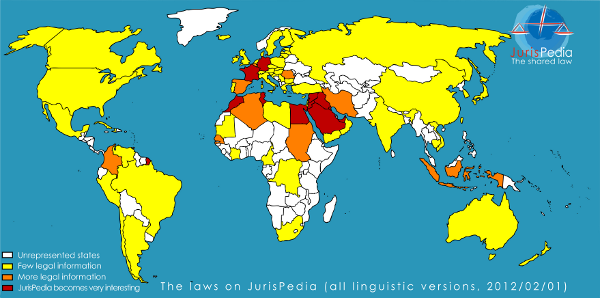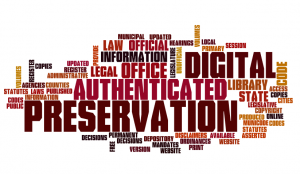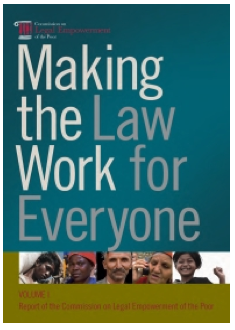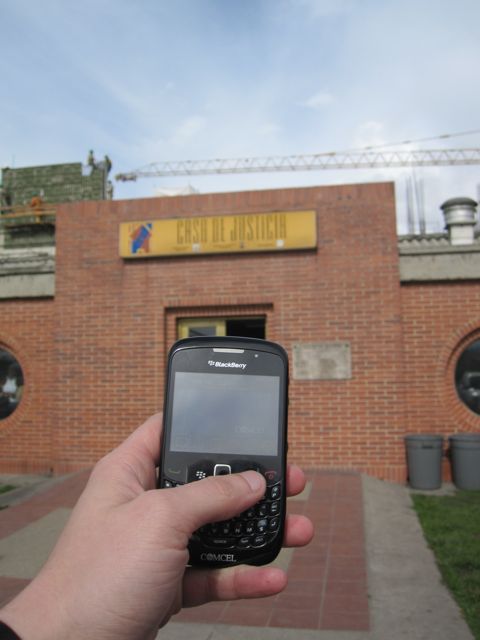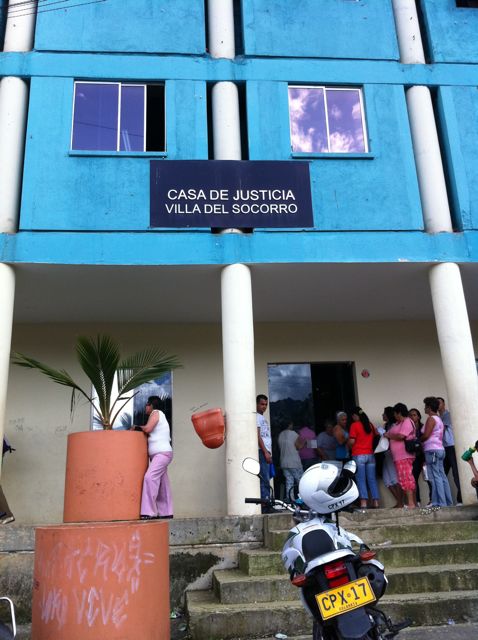 For some time, Open Access has been a sort of gnat in my office, bugging me periodically, but always just on the edge of getting my full attention. Perhaps due in large part to the fact that our journals simply cost much less than those in other disciplines, law librarians have been able to stay mostly on the outside of this discussion. The marketing benefits of building institutional repositories are just as strong for law schools as other disciplines, however, and many law schools are now boarding the train — with librarians conducting. If you’re new to the discussion of Open Access in general, I suggest Peter Suber’s Open Access Overview for an excellent introduction. This piece is meant to briefly summarize the goals, progress, and future of OA as it applies (mostly) to legal scholarship.
For some time, Open Access has been a sort of gnat in my office, bugging me periodically, but always just on the edge of getting my full attention. Perhaps due in large part to the fact that our journals simply cost much less than those in other disciplines, law librarians have been able to stay mostly on the outside of this discussion. The marketing benefits of building institutional repositories are just as strong for law schools as other disciplines, however, and many law schools are now boarding the train — with librarians conducting. If you’re new to the discussion of Open Access in general, I suggest Peter Suber’s Open Access Overview for an excellent introduction. This piece is meant to briefly summarize the goals, progress, and future of OA as it applies (mostly) to legal scholarship.
Background and History
Open Access is not merely the buzzword of the moment: Open Access, or OA, describes work that is free to read, by anyone. Though usually tied to discussions of Institutional or Scholarly Repositories, the two do not necessarily have to be connected. Publications can be made “open” via download from an author’s institutional or personal home page, a disciplinary archive such as SSRN or BePress, or through nearly any other type of digital collection – so long as is it provided for free. For readers, free should mean free of cost and free of restrictions. These are sometimes described as gratis OA and libre OA, respectively. As Peter Suber notes, “Gratis OA is free as in beer. Libre OA is free as in beer and free as in speech.”
In addition to the immediate benefits of OA for researchers and for libraries (who would save a great deal of money spent on collections), strong ethical arguments can be made for OA as a necessary public service, given the enormous public support of research (tax dollars). The argument sharpens when research is explicitly supported by Federal or other grant funds. Paying to access grant-funded work amounts to a second charge to the taxpayer, while private publishers profit.
Of course, OA wasn’t an option with print resources; while anyone is “free” to go to a library that subscribes to a journal and read it, physical location itself is a barrier to access. In the networked digital environment, physical location need not be a barrier anymore. For members of the scholarly community who wish to share and discuss work with each other, that might be the end of the story. But while the technology is mature, policies and politics are still developing, and fraught with challenges posed largely by rights holders with significant financial interests in the current publishing system. One vocal segment of that market raises economic objections based on their financial support of the peer review process and other overhead costs related to production and dissemination of scholarly research. Since publishers control the permissions necessary to make OA work most fully, their opposition frustrates the efforts of many OA advocates. Not all publishers are invested in erecting barriers to OA, though; see, e.g., the ROMEO directory of publisher copyright policies and self-archiving. Though some impose embargo periods before posting, many publishers across disciplines allow deposit of the final published version of work.
In the midst of this conflict, many OA proponents acknowledge that production of scholarship is not without costs; Old Faithful didn’t start spouting Arrogant Bastard Ale one bright morning. Separate from the mechanism for sharing the Open Access version of an article, there are charges associated with its production that must be supported. The OA movement seeks a new model for recuperating these costs, rather than eliminating the costs altogether.
Interoperability
So, the “open” part of Open Access is roughly equivalent to “free” (for the reader), which presents economic challenges that remain to be solved. What about the “access” part?
Access to physical literature was largely a matter of indexing and physical copies; inclusion in the leading index(es) of a field was an honor (and potential economic advantage) to journals. Collection development decisions used to be made based in part on whether a journal was indexed. Access to online literature requires more than simply the digital equivalent in order to sufficiently serve the community, though: both the ability to download the article, and the ability to search across the literature are required for researchers to effectively manage the volume of literature.
As a foundational matter, openness in scholarly communication requires a certain amount of interoperability between the archives that serve up scholarship. The Open Archives Initiative (OAI) develop standards to promote interoperability between archives. Such standards support harvesting and assembling the metadata from multiple OAI-compliant archives to facilitate searching and browsing across collections in an institution, field, or discipline.
Paths to OA
One repeated practical question around Open Access is logistical: Who will build the archive, and how will it be populated on a regular basis? There are several models for implementing Open Access. Disciplinary Archives, Institutional or Unit/Departmental Repositories, and Self Archiving are all paths that can be taken, somewhat separate from publishers’ progress towards OA.
Disciplinary repositories are somewhat common around the academic community: PLoS & PubMedCentral, for example, provide access to a large collection of works in Science and Medicine. Like SSRN/LSN, they provide a persistent, accessible host for scholarship, and searchable collection for new papers in the field. One difference in the legal community is in the primary publishing outlets: for most law faculty, the most prestigious placement is in a top-20 law school-published law journal. These journals vary on their OA friendliness, but many faculty read their agreements in such a way to allow this sort of archiving. SSRN has thus provided a low bar for legal scholars to make their work available openly. SSRN also provides a relatively simple, if not entirely useful, metric for scholarly impact in appointments and in promotion and tenure discussions. As of last checking, SSRN’s abstract database was at 395k+, and their full text collection at 324k.
Institutional or Unit/Departmental Repositories (IRs) are also becoming a popular choice for institutions seeking to promote their brand, and to increase the profile of their faculty. A variety of options are available for creating an IR, from open-source hosting to turnkey or hosted systems like BePress’ Digital Commons. Both avenues tend to offer flexibility in creating communities within the IR for subjects or other series, for handling embargoes and other specialized needs. BePress’ Digital Commons, for example, can serve as an IR and/or a publishing system for the peer-review and editing process. As a path to Open Access, the only barriers to IRs are institutional support for the annual licensing/hosting fee and some commitment of staff for populating the IR with publications (or facilitating, if authors will self-archive).
Self-archiving represents an appeal directly to authors, who are not the tough sell that publishers tend to be. As Suber notes, the scholarly publishing arena lacks the economic disincentives to OA normally present for authors. Scholarly law journal articles, the bread and butter of the legal academy, do not produce royalties, so authors have nothing to lose from making their work available in OA platforms. One route to OA, therefore, is self-archiving by researchers. But while they might support OA in principle, researchers’ own best interests may push them to publish in “barrier-based” journals to protect their tenure and grant prospects, despite the interests of both the public and their own scientific community in no-cost, barrier-free access.
What about mandates as part of the path to OA? Recently, some academic institutions and grant agencies have begun instituting some form of mandate of open access publication. The NIH mandate, for example, implemented in 2008, requires deposit in PubMed Central within twelve months of publication for the results of any of their funded research. Others have followed, including Harvard Law School. As a path to OA, both are useful, though funder mandates alone wouldn’t hit enough of the literature to make a difference in terms of access for researchers. Institutional mandates, however, just might:
“When complemented by funding agency and foundation public-access mandates that capture the work originating with industry and government researchers who may not have faculty status, university mandates will, in time, produce nearly universal access to all the scientific literature.”
ROARMAP tracks these mandates and the directed repositories for each. Though other universities and departments have instituted mandates, the 2008 Harvard Law mandate is notable for having originated with the faculty:
“The Harvard Law School is committed to disseminating the fruits of its research and scholarship as widely as possible. In keeping with that commitment, the Faculty adopts the following policy: Each Faculty member grants to the President and Fellows of Harvard College permission to make his or her scholarly articles and to exercise the copyright in those articles. More specifically, each Faculty member grants to the President and Fellows a nonexclusive, irrevocable, worldwide license to exercise any and all rights under copyright relating to each of his or her scholarly articles, in any medium, and to authorize others to do the same, provided that the articles are not sold for a profit. The policy will apply to all scholarly articles authored or co-authored while the person is a member of the Faculty except for any articles completed before the adoption of this policy and any articles for which the Faculty member entered into an incompatible licensing or assignment agreement before the adoption of this policy. The Dean or the Dean’s designate will waive application of the policy to a particular article upon written request by a Faculty member explaining the need.”
Federal Input
Two recent bills dealt with open access: FRPAA, which would mandate OA for federally-funded research; and the Research Works Act (RWA), which would have prohibited such mandates. RWA (HR 3699) was withdrawn in late February of 2012, following Elsevier’s withdrawal of support. Its sponsors issued this statement:
“As the costs of publishing continue to be driven down by new technology, we will continue to see a growth in open-access publishers. This new and innovative model appears to be the wave of the future. … The American people deserve to have access to research for which they have paid. This conversation needs to continue, and we have come to the conclusion that the Research Works Act has exhausted the useful role it can play in the debate.”
FRPAA (HR 4004 and S 2096), on the other hand, is intended “to provide for Federal agencies to develop public access policies relating to research conducted by employees of that agency or from funds administered by that agency.” FRPAA would require any agencies with expenditures over $100 million annually to make manuscripts of the articles published from their funding public within six months of publication – FRPAA puts the burden/freedom on each agency to maintain an archive or draw on an existing archive (e.g., PMC). Each agency is free to develop their own policy as fits their needs (and perhaps their researchers’ needs). The bill also gives the agency a nonexclusive license to disseminate the work, with no other impact on copyright or patent rights. The bill also requires that the agency have a long-term preservation plan for such publications.
Copyright Tangles
How does copyright limit the effectiveness of mandates and other archiving? Less than the average law librarian might imagine. Except where an author’s publishing agreement specifies otherwise, the scholarly community generally agrees that an author holds copyright in his or her submitted manuscript. That copy, referred to as the pre-refereeing preprint, may generally be deposited in an Institutional repository such as the University of Illinois’ IDEALS, posted to an author’s/institution’s SSRN or BePress account, or to their own personal web page.
Ongoing Work
ARL/SPARC encourages universities to voice their approval and support of FRPAA. Researchers around the academy are beginning to show support as well: research has indicated that researchers would self-archive if they were 1) informed about the option, and 2) permitted by their copyright/licensing agreements with publishers to do so. With greater education about the benefits of Open Access for the institution as well as the scholarly community, authors could be encouraged to make better use of institutional and other archives.
In the legal academy, scholarly publishing is somewhat unusual. The preprint distribution culture is strong, and the main publishing outlets are run by the law schools – not by large, publicly-traded U.S. and foreign media corporations. Reprint permission requests are often handled by a member of the law school’s staff – or by a law student – and it’s unclear how much the journals know or care about republication or OA issues in general. But authors and their home institutions aren’t necessarily waiting around for answers; they’re
and the main publishing outlets are run by the law schools – not by large, publicly-traded U.S. and foreign media corporations. Reprint permission requests are often handled by a member of the law school’s staff – or by a law student – and it’s unclear how much the journals know or care about republication or OA issues in general. But authors and their home institutions aren’t necessarily waiting around for answers; they’re  archiving now, and taking down works later if asked. Carol Watson and James Donovan have written extensively about their experience with building and implementing an institutional repository at the University of Georgia, using the Berkeley Electronic Press Digital Commons software. See, e.g., Institutional Repositories: Essential Infrastructure for Scholarship in the Digital Age, Carol A. Watson, James M. Donovan, and Pamela Bluh; White Paper: Behind a Law School’s Decision to Implement an Institutional Repository, James M. Donovan and Carol A. Watson; and Implementing BePress’ Digital Commons Institutional Repository Solution: Two Views from the Trenches, James M. Donovan and Carol A. Watson.
archiving now, and taking down works later if asked. Carol Watson and James Donovan have written extensively about their experience with building and implementing an institutional repository at the University of Georgia, using the Berkeley Electronic Press Digital Commons software. See, e.g., Institutional Repositories: Essential Infrastructure for Scholarship in the Digital Age, Carol A. Watson, James M. Donovan, and Pamela Bluh; White Paper: Behind a Law School’s Decision to Implement an Institutional Repository, James M. Donovan and Carol A. Watson; and Implementing BePress’ Digital Commons Institutional Repository Solution: Two Views from the Trenches, James M. Donovan and Carol A. Watson.
Conclusion The bottom-line is, whether you’re an author or a librarian (or some other type of information/knowledge professional), you should be thinking about current and future access to the results of research — and the logistical/economical/political challenges — whether that research is happening in law or elsewhere in the academy.
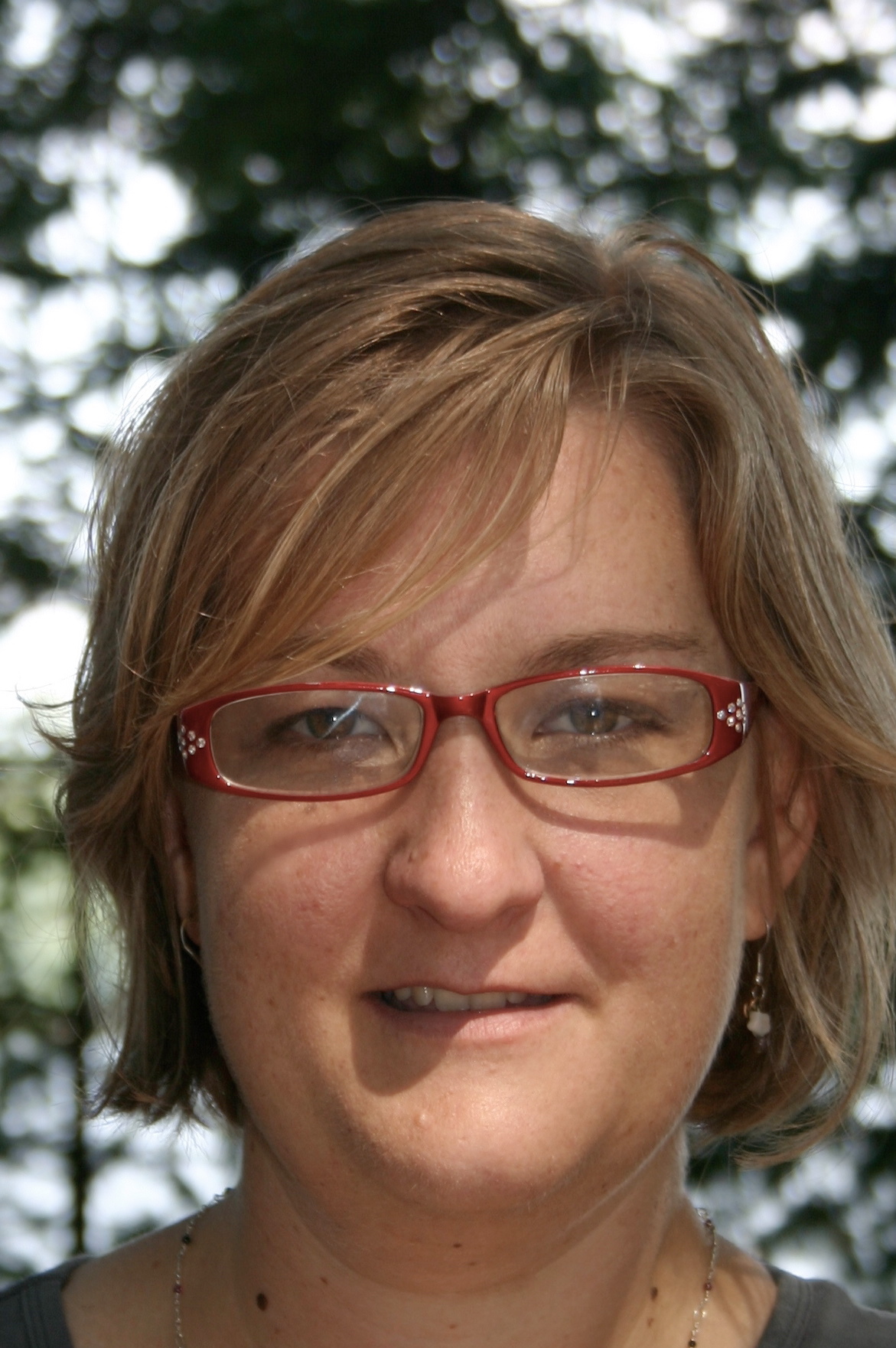 Stephanie Davidson is Head of Public Services at the University of Illinois in Champaign. Her research addresses public services in the academic law library, and understanding scholarly research methods and behavior.
Stephanie Davidson is Head of Public Services at the University of Illinois in Champaign. Her research addresses public services in the academic law library, and understanding scholarly research methods and behavior.
VoxPopuLII is edited by Judith Pratt. Editors-in-Chief are Stephanie Davidson and Christine Kirchberger, to whom queries should be directed. The information above should not be considered legal advice. If you require legal representation, please consult a lawyer.








 Benjamin Keele is a reference librarian at the
Benjamin Keele is a reference librarian at the 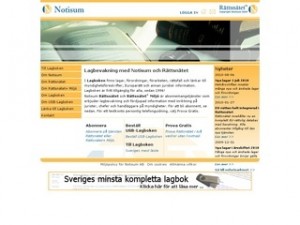
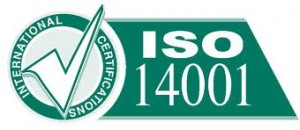





 Anton Geist is Law Librarian at
Anton Geist is Law Librarian at 


